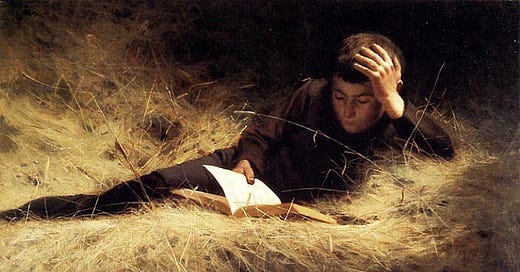
In Elizabeth C. Corey’s review of Cheri Blomquist’s slightly “mundane” but nevertheless useful guide to great children’s books, she says this about how children read, which caught my eye:
Many parents remark that bedtime reading is one of their most treasured memories of raising children. This is in part because it allows parents to introduce children to the world we all inhabit, to guide them in discovering plants and animals, people, mysteries, and absurdities. When a child cries out in amazement that something in “real life” has echoed events in a book, we see the expansion of that child’s moral world, the discernment of patterns, and the identification of characteristic personality types. Ramona Quimby’s desire to pull Susan’s enticing “boing-boing” curls, for example, is probably the kind of desire that has been shared by all first-graders at all times.
In this kind of reading, learning is a thoroughgoing delight, not a duty, and it answers a direct need of our nature. Children, as every parent knows, are decidedly not utilitarians. When they walk, they are as interested in the bugs on the ground as in arriving at the destination; eating and getting dressed are alike games. Reading, similarly, is never for something else. In their natural state, children do not read to gather information for a test or to build up their debate skills. Instead they approach books with a “negative capability” that few adults possess. They do not mind—and even enjoy—the mysteries, the circuitous routes, the nonsense words, and the inconsistencies.
Corey is absolutely right about this, but more than a few adults also have this “negative capability.” (Readers of Tristam Shandy, unite!) She continues:
Keep reading with a 7-day free trial
Subscribe to Prufrock to keep reading this post and get 7 days of free access to the full post archives.



